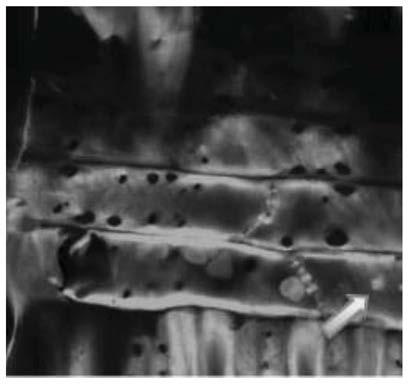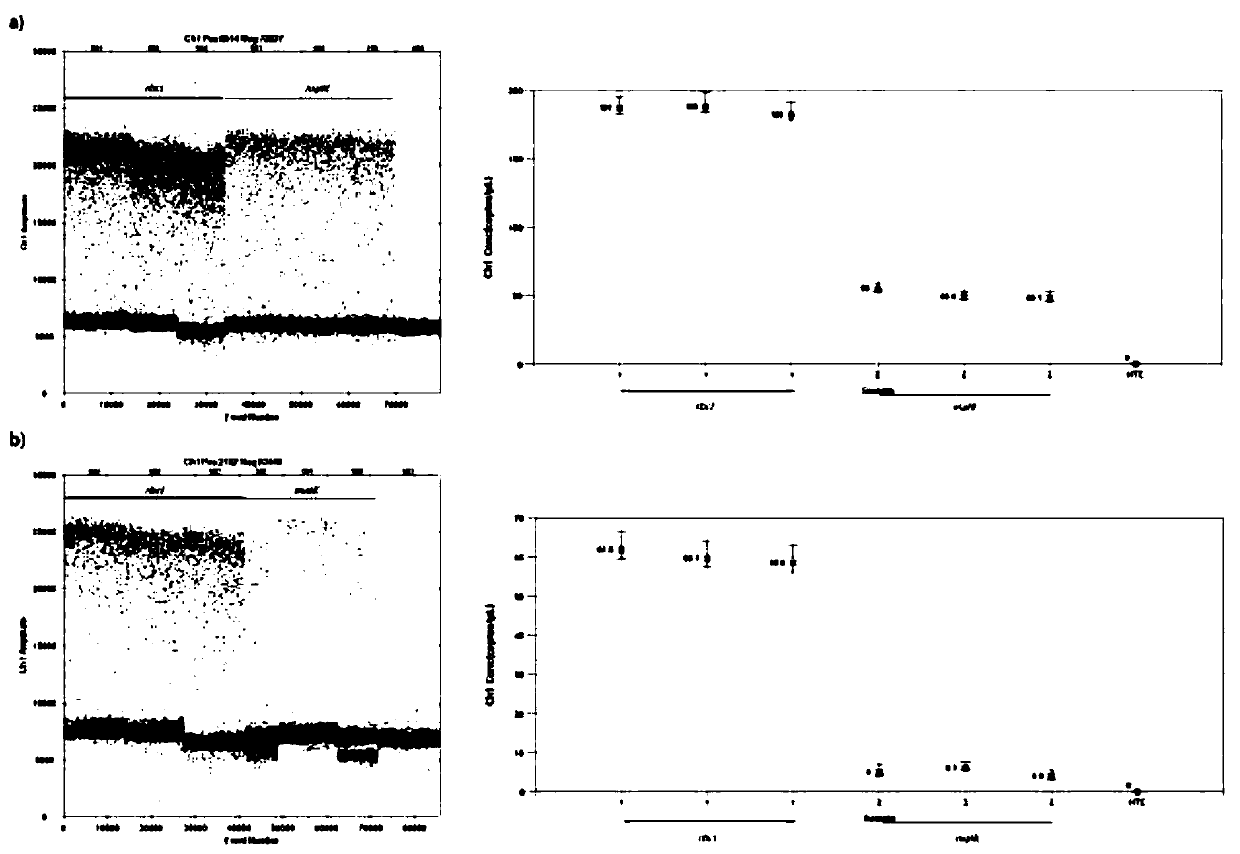Method for extracting DNA from wood targeted cells
A technology targeting cells and extraction methods, applied in the direction of DNA preparation, recombinant DNA technology, biochemical equipment and methods, etc., can solve the problem of incomplete extraction of wood DNA, restricting the development of wood DNA identification methods, and inability to effectively remove exogenous DNA pollution and other problems, to achieve the effect of shortening the experimental period, wide application range, and removing foreign DNA contamination
- Summary
- Abstract
- Description
- Claims
- Application Information
AI Technical Summary
Problems solved by technology
Method used
Image
Examples
Embodiment 1
[0047] Example 1: A method for precise extraction of DNA from air-dried wood
[0048] (1) Select the air-dried wood sample, firstly undergo laser radiation purification (1000W, 30Hz), scan speed 1cm / s, repeat 2 cycles; use 3% sodium hypochlorite to soak for 30min; then, cut the outer surface of the sample with a thickness of about 3mm to remove exogenous pollution;
[0049] (2) The wood sample obtained in step (1) was cut with a slide-away microtome to cut wood radial slices, placed under an inverted microscope to accurately separate the wood-targeted cells, and collected in a 50ml centrifuge tube;
[0050] (3) In a sterilized ultra-clean working environment, add 4.5ml of DNA lysate (3% (w / v) CTAB, 100mM Tris-HCl (PH 8.0), 1.4M NaCl to the wood sample obtained in step (2) , 20mM EDTA, 1% (w / v) Boric Acid, 5% (w / v) PVP, 2% (v / v) DTT), vortex and mix; 55 ℃ water bath for 300min, during which the centrifuge tube was turned several times; Cool for 2 minutes, add an equal volume ...
Embodiment 2
[0056] A method for extracting DNA from wood-targeted cells, which removes exogenous pollution on the wood surface, uses cytochemical methods combined with microscopic techniques to locate and separate DNA-enriched target cells, and adds DNA lysate, removes impurities, precipitates, dissolves, Purification and nested PCR amplification for efficient extraction of wood DNA.
Embodiment 3
[0058] A method for extracting DNA from wood-targeted cells, which removes exogenous pollution on the wood surface, uses cytochemical methods combined with microscopic techniques to locate and separate DNA-enriched target cells, and adds DNA lysate, removes impurities, precipitates, dissolves, Purification and nested PCR amplification for efficient extraction of wood DNA;
[0059] Removing exogenous contamination of the wood surface includes scanning the surface of the wood sample with laser radiation, then soaking the wood sample in sodium hypochlorite, and then using a scalpel to cut off the outer surface of the wood sample;
[0060] Using cytochemical methods combined with microscopic techniques to locate and isolate DNA-enriched target cells, place wood radial section sections on glass slides, stain wood radial section sections with DAPI solution, and then wash with phosphate buffer; Wood-targeted cells were isolated and collected in centrifuge tubes for DNA extraction.
PUM
 Login to View More
Login to View More Abstract
Description
Claims
Application Information
 Login to View More
Login to View More - R&D
- Intellectual Property
- Life Sciences
- Materials
- Tech Scout
- Unparalleled Data Quality
- Higher Quality Content
- 60% Fewer Hallucinations
Browse by: Latest US Patents, China's latest patents, Technical Efficacy Thesaurus, Application Domain, Technology Topic, Popular Technical Reports.
© 2025 PatSnap. All rights reserved.Legal|Privacy policy|Modern Slavery Act Transparency Statement|Sitemap|About US| Contact US: help@patsnap.com


